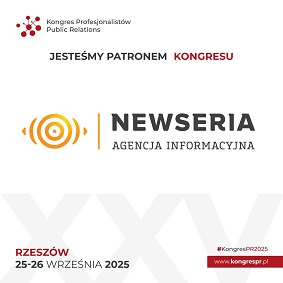Mobile App Developers Gain Greater Control Over Ad Revenues With White-Label RTB Solutions
Among the emerging strategies, developers are turning to white-label Real-Time Bidding (RTB) platforms to build independent ad networks that offer more control, higher returns, and deeper user insights.
The Rise of In-App Advertising
In-app advertising continues to grow rapidly across both gaming and non-gaming verticals. In the first quarter of 2024 alone, ad revenue increased by 26% for non-gaming apps and 7% for gaming apps, according to industry reports. With user acquisition costs on the rise and competition intensifying, developers are looking for more efficient and sustainable ways to maximize earnings from existing users.
Traditional monetization models often rely on third-party ad networks, where developers share a portion of revenue and relinquish control over the ad experience. In contrast, white-label RTB platforms are changing this dynamic by giving developers the infrastructure to operate their own networks and keep 100% of ad revenue.
How RTB Platforms Work in Practice
Real-Time Bidding platforms are designed to facilitate automated buying and selling of digital ad space. When integrated into mobile apps, they support a wide range of ad formats, including banners, video ads, audio ads, and interactive units—all optimized for user engagement on mobile devices.
Modern RTB solutions also address major industry concerns around transparency and fraud. Technologies like sellers.json and ads.txt are commonly implemented to verify legitimate inventory and combat dishonest behavior in the ad marketplace. These features help developers maintain the integrity of their ad offerings while providing advertisers with confidence in their campaign performance.
In addition to fraud prevention and measurement tools, RTB platforms are built to scale. As an app’s user base grows, so does its advertising inventory—enabling a proportional increase in potential revenue.
Leveraging Platforms Like Admixer’s RTB Stack
Ad tech solutions such as Admixer’s RTB Stack are gaining traction for their all-in-one functionality. These platforms allow mobile developers to connect directly with both supply-side platforms (SSPs) and demand-side platforms (DSPs), bypassing intermediaries and simplifying campaign management.
A key feature of such platforms is the inclusion of a Software Development Kit (SDK), which enables seamless integration into apps. With the SDK, developers can monetize their inventory more efficiently and even connect to large-scale ad exchanges like Google AdX. This direct access enhances visibility, increases competition for ad slots, and can lead to more favorable pricing.
Moreover, the ability to promote other in-house apps using unsold inventory creates added value by reducing reliance on external user acquisition channels.
Collaborative Models Among Independent Developers
White-label RTB technology also supports collaboration among independent developers. By pooling their advertising inventories, smaller studios can form joint ad networks, increasing their overall reach and bargaining power. These collective networks can attract larger advertisers, deliver more impactful campaigns, and share the operational costs associated with maintaining an ad infrastructure.
This cooperative approach allows smaller players to compete on a more level playing field with larger app publishers, while still retaining control over how their advertising is managed and monetized.
Moving Forward With White-Label RTB Platforms
As the mobile ecosystem matures, the demand for more transparent, customizable, and scalable ad monetization tools will continue to grow. White-label RTB platforms are at the forefront of this evolution, offering developers an alternative path to financial independence in a competitive digital marketplace.
By building their own advertising networks, developers can align ad strategy with user experience, maintain brand integrity, and capture the full value of their app traffic.
For developers seeking a comprehensive, flexible, and revenue-optimized advertising infrastructure, white-label RTB solutions present a compelling opportunity to redefine their monetization strategies.
Alexey Boltivets
Admixer
+44 7700 182837
email us here
Legal Disclaimer:
EIN Presswire provides this news content "as is" without warranty of any kind. We do not accept any responsibility or liability for the accuracy, content, images, videos, licenses, completeness, legality, or reliability of the information contained in this article. If you have any complaints or copyright issues related to this article, kindly contact the author above.
Global Youth Leaders Unite in Cape Town to Champion Compassion, Ubuntu, and Interfaith Action at Youth IF20
Captain Compliance Launches On-Prem AI Tools via OpenAI's GPT-OSS to Power Advanced Data Privacy & Regulatory Automation
Ferguson Law Firm’s Cody Dishon Secures Texas’ #1 Medical Malpractice Verdict and Earns Top Verdict Honor
Więcej ważnych informacji
 Jedynka Newserii
Jedynka Newserii

 Jedynka Newserii
Jedynka Newserii

Ochrona środowiska

A. Bryłka (Konfederacja): Ograniczenie emisyjności nie musi się odbywać za pomocą celów klimatycznych. Są absurdalne, nierealne i niszczące europejską gospodarkę
W lipcu br. Komisja Europejska ogłosiła propozycję nowego celu klimatycznego, który zakłada ograniczenie emisji gazów cieplarnianych o 90 proc. do 2040 roku w porównaniu do stanu z 1990 roku. Został on zaproponowany bez zgody państw członkowskich, w przeciwieństwie do poprzednich celów na 2030 i 2050 rok. Polscy europarlamentarzyści uważają ochronę środowiska i zmiany w jej zakresie za potrzebne, jednak nie powinny się odbywać za pomocą nieosiągalnych celów klimatycznych.
Polityka
Dramatyczna sytuacja ludności w Strefie Gazy. Pilnie potrzebna dobrze zorganizowana pomoc humanitarna

Według danych organizacji Nutrition Cluster w Strefie Gazy w lipcu br. u prawie 12 tys. dzieci poniżej piątego roku życia stwierdzono ostre niedożywienie. To najwyższa miesięczna liczba odnotowana do tej pory. Mimo zniesienia całkowitej blokady Strefy Gazy sytuacja w dalszym ciągu jest dramatyczna, a z każdym dniem się pogarsza. Przedstawiciele Polskiej Akcji Humanitarnej uważają, że potrzebna jest natychmiastowa pomoc, która musi być dostosowana do aktualnych potrzeb poszkodowanych i wsparta przez stronę izraelską.
Polityka
Wśród Polaków rośnie zainteresowanie produktami emerytalnymi. Coraz chętniej wpłacają oszczędności na konta IKE i IKZE

Wzrosła liczba osób, które oszczędzają na cele emerytalne, jak również wartość zgromadzonych środków. Liczba uczestników systemu emerytalnego wyniosła w 2024 roku ponad 20,8 mln osób, a wartość aktywów – 307,5 mld zł – wynika z najnowszych danych Urzędu Komisji Nadzoru Finansowego (UKNF). Wyraźny wzrost odnotowano w przypadku rachunków IKE i IKZE, na których korzyść działają m.in. zachęty podatkowe. Wpłacane na nie oszczędności są inwestowane, a tym samym wspierają gospodarkę i mogą przynosić atrakcyjną stopę zwrotu.
Partner serwisu
Szkolenia

Akademia Newserii
Akademia Newserii to projekt, w ramach którego najlepsi polscy dziennikarze biznesowi, giełdowi oraz lifestylowi, a także szkoleniowcy z wieloletnim doświadczeniem dzielą się swoją wiedzą nt. pracy z mediami.






.gif)

 |
| |
| |
|